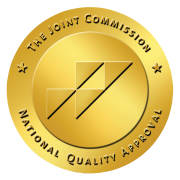Understanding the Types of Nervous Breakdowns
It is thrown around casually enough. TV, books, social media—we hear about the infamous nervous breakdown. It conjures images of a person suddenly incapacitated by an invisible weight, unable to meet the demands of daily life. But what does it really mean? And more: what are the types of nervous breakdown?
The phrase “nervous breakdown” isn’t a clinical diagnosis, but it’s often used when someone reaches a breaking point under extreme stress. At Lido Wellness Center in Newport Beach, we help identify the underlying conditions and guide individuals toward lasting recovery and emotional stability.
Let’s walk through the landscape of mental distress, exploring the various terrains that are often lumped together under the umbrella of a nervous breakdown. Along the way, we’ll discover how Intensive Outpatient Programs (IOPs) offer help for those who believe they have experienced a type of nervous breakdown.
The Myth and Reality of Types of Nervous Breakdowns
The term “nervous breakdown” isn’t found in the pages of medical textbooks. It’s more of a layman’s term, a catch-all for when life’s pressures crescendo into an overwhelming feeling of stress.
Imagine the mind as a bridge, designed to carry a certain load. When the weight of personal and professional demands exceeds this capacity, the bridge buckles. This metaphorical ‘buckling’ is what many refer to as a nervous breakdown.
The Varied Landscapes of Mental Distress
While not a clinical diagnosis, the experiences described as types of nervous breakdowns can be traced back to several well-defined mental health conditions. Let’s explore six of these conditions, akin to visiting different countries, each with its own culture and challenges.
1. Major Depressive Disorder Breakdown:
In the life of someone with MDD, imagine waking up every morning feeling as if there’s an invisible anchor pulling you down, making the simplest tasks feel Herculean. For example, a once passionate artist finds her paints unopened for months; the canvas remains blank, not because of a lack of ideas, but from a profound loss of interest and energy. This breakdown manifests as days spent in bed, ignoring calls and messages, and a profound sense of isolation, even in a room full of people. The world isn’t just gray; it’s as if all color has been leached away, leaving behind only shadows.
2. Generalized Anxiety Disorder Breakdown:
For an individual with generalized anxiety disorder, imagine their mind is like a computer with too many tabs open, each forecasting doom. A scenario might involve constant worry about job security, to the point of envisioning being fired for minor mistakes, leading to financial ruin. This person rehearses conversations repeatedly, anticipating conflicts that never occur.
The breakdown induced by Generalized Anxiety Disorder (GAD), may find the individual at a point where they are virtually incapacitated by their anxiety, finding themselves unable to engage in daily activities or fulfill responsibilities.
The overwhelming and constant worry can lead to severe emotional and physical exhaustion, making even the idea of getting out of bed a daunting task. They might isolate themselves, avoiding social interactions out of fear of being overwhelmed or judged, which in turn can exacerbate feelings of loneliness and despair. Simple decisions become sources of major anxiety, leading to procrastination and inaction. In extreme cases, the person might experience panic attacks, further impairing their ability to function.
3. Panic Disorder:
Those with panic disorder might experience their breakdown as an ambush in the night. Picture someone shopping in a grocery store, suddenly gripped by an inexplicable terror. Their heart races, palms sweat, and the world tilts — a fear so intense it mimics a heart attack. They might abandon their cart and flee the store, seeking refuge in their car, gasping for air, convinced they’re dying.
This terrifying experience can lead to an intense fear of the panic attacks themselves, creating a cycle of anxiety about the possibility of future episodes. As a result, individuals may start to avoid places, situations, or activities they associate with panic attacks, severely limiting their life and daily functions.
The fear of experiencing another attack can become so overwhelming that it leads to agoraphobia, the fear of being in situations where escape might be difficult or help might not be available. In severe cases, the person might find themselves unable to leave their home or engage in any normal activity, trapped by the fear of triggering another panic attack.
4. Post-Traumatic Stress Disorder (PTSD):
A person with PTSD might live their breakdown as a series of relentless flashbacks. For instance, a veteran hears a car backfire and is instantly transported back to a battlefield, ducking for cover, his heart pounding as if the danger were present and not a memory. The world around him fades away, replaced by vivid memories of trauma.
This constant state of re-experiencing can lead to severe anxiety, hypervigilance, and an exaggerated startle response, as they are always on edge, waiting for the next threat to emerge.
The world may seem like a perpetually dangerous place, leading to avoidance behaviors where the individual shuns places, people, and activities that might remind them of the trauma, further isolating themselves from supportive relationships and environments.
In its most severe form, PTSD can result in a breakdown where a person feels entirely disconnected from the present, struggling with intense bouts of depression, anger, guilt, or shame. This can lead to substance abuse, self-harm, or suicidal thoughts as ways of coping with the unbearable pain and memories.
5. Acute Stress Disorder:
Imagine someone involved in a car accident. In the weeks following, they can’t bring themselves to get behind the wheel again. The screech of tires and the crash of metal play on a loop in their mind. They jump at the sound of a horn, and the sight of a car approaching too quickly sends them into a panic.
The culmination of these symptoms can manifest as a breakdown where the individual feels unable to engage with their usual activities or responsibilities, perhaps finding it difficult to go to work, maintain relationships, or even perform routine tasks. This stress reaction is often seen as one of the types of nervous breakdowns.
6. Adjustment Disorders:
Consider someone who has recently gone through a divorce. This change, while perhaps expected, feels like an insurmountable obstacle. They find themselves breaking down in tears at minor frustrations, unable to concentrate at work, and withdrawing from friends and family. What used to be routine now feels like navigating a labyrinth, with every turn bringing more confusion and despair. This emotional turmoil overflows, showing up in sleepless nights and a sense of dread about the future.
The critical point comes where the individual’s ability to cope with a life change or stressor collapses, leading to significant emotional and functional impairment.
The person may exhibit signs of severe anxiety or depression, finding even small tasks overwhelming. This breakdown is marked by a stark deviation from previous behavior, indicating a profound struggle to adapt, and often requires immediate intervention to prevent further decline in mental and emotional well-being.
Navigating Types of Nervous Breakdowns With IOP
If you believe you are experiencing a nervous breakdown, or someone you love is going through one of the types of nervous breakdowns, it’s likely this is a severe situation that needs immediate attention.
Intensive Outpatient Programs (IOP) are like a team of expert engineers and guides, offering the tools and support needed to repair and reinforce the bridge of the mind. These programs understand that each person’s bridge is unique, requiring a personalized approach to healing. What are seen as the types of nervous breakdowns are often best treated in this environment.
One of the strengths of IOPs is their blend of intensive care with the flexibility to remain engaged in one’s daily life. This balance is crucial for those who are working to rebuild their bridges while continuing to traverse the demands of their personal and professional lives.
IOPs equip individuals with coping mechanisms and strategies to navigate future stresses. Through cognitive behavioral therapy, mindfulness, and other techniques, participants learn how to distribute the load on their bridge more evenly, preventing future collapses.
When to Seek Help
While the various types of nervous breakdown might not have a place in clinical nomenclature, the experiences it describes are real and varied. A nervous breakdown can feel sudden, but it often builds up over time. If you notice persistent anxiety, exhaustion, or emotional numbness, it may be time to reach out. Lido Wellness Center in Newport Beach offers compassionate, evidence-based care to help you heal and move forward. If you need help understanding what is happening or are ready to find healing and reclaim your life, Lido Wellness Center is here to help. Call us today: 949-541-8466.
Frequently Asked Questions about Nervous Breakdowns
Q: What is a nervous breakdown?
A: It’s not a medical term, but it describes a period of extreme emotional or mental distress when daily life feels unmanageable. It can stem from anxiety, depression, trauma, or prolonged stress.
Q: How long does a nervous breakdown last?
A: Duration varies by person. Some recover in days or weeks with rest and support, while others need structured therapy to address underlying causes.
Q: How is a nervous breakdown treated?
A: Treatment may include therapy such as DBT or EMDR, medication management, and lifestyle changes that reduce stress and build resilience.
Q: When should I get professional help?
A: If you feel hopeless, overwhelmed, or unable to function, professional help can make a difference. Lido Wellness Center in Newport Beach provides compassionate, evidence-based care for anxiety and emotional distress.
Last Updated: November 2025




